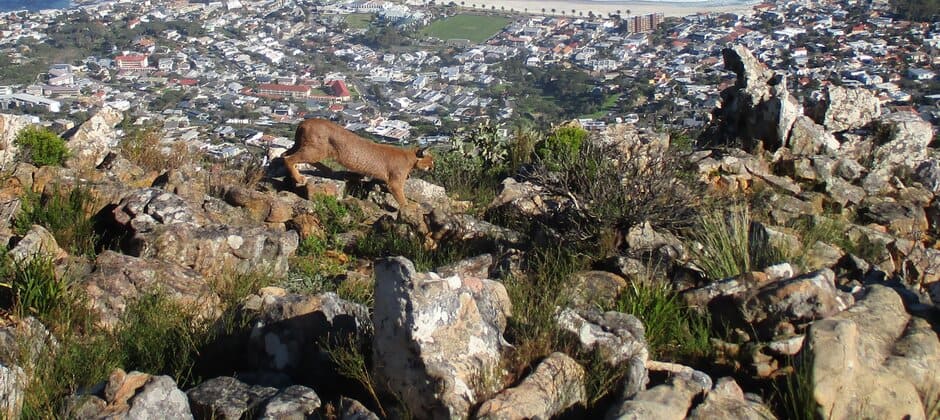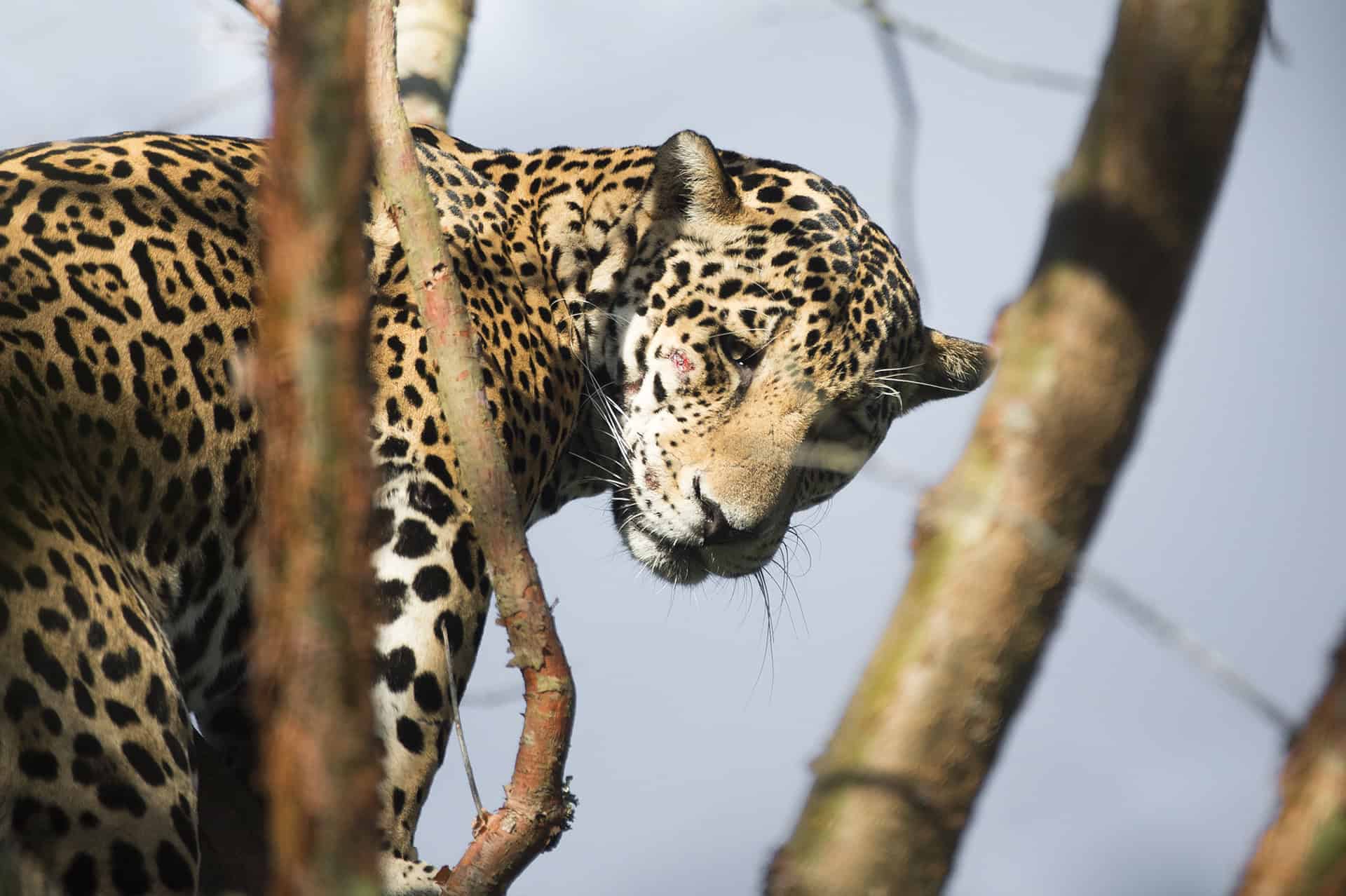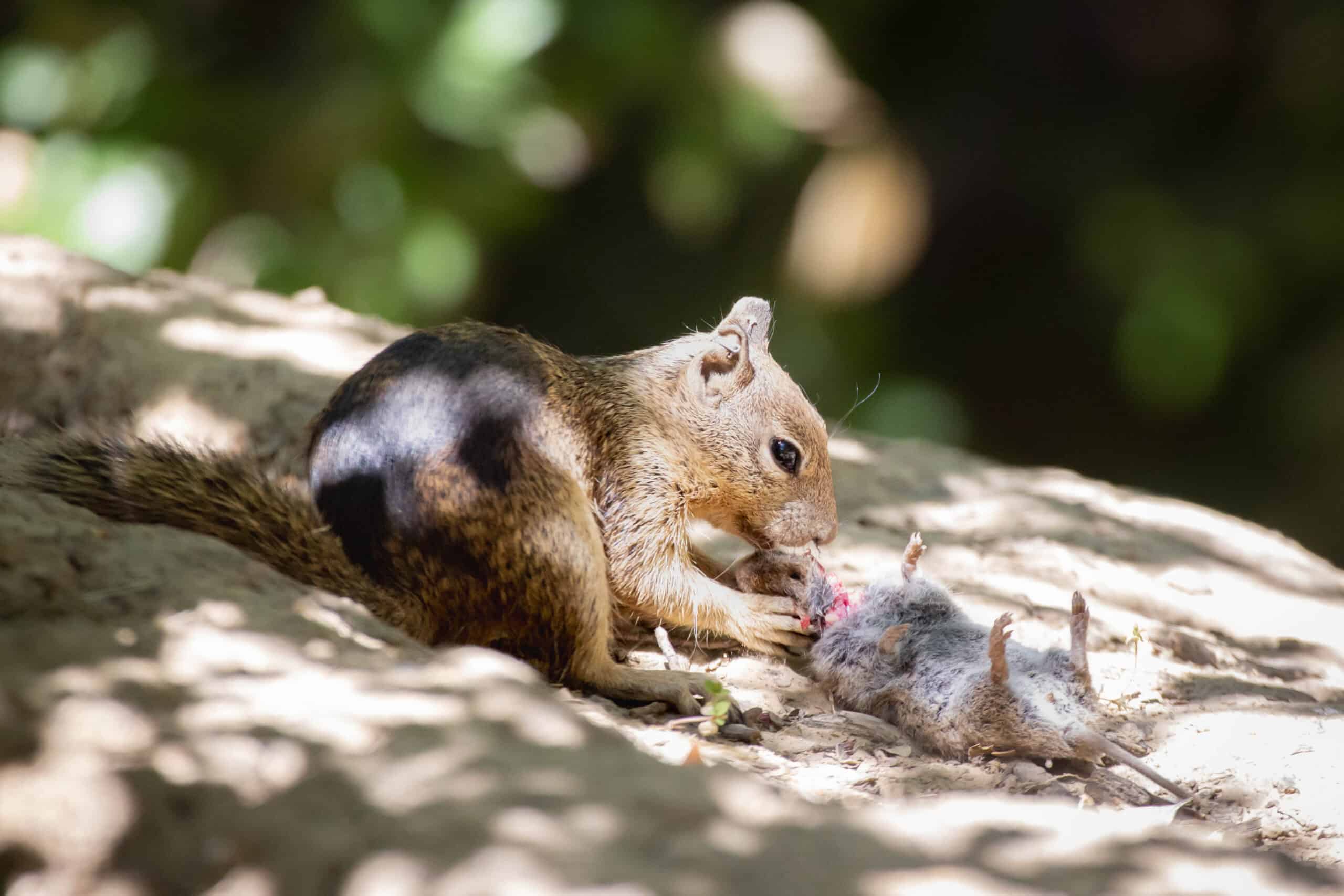Share this article
Wild Cam: Discovering Cape Town’s little known urban cats
The urban felines paw the beach sands, cross highline pipes and move through people’s backyards in Cape Town, but they are far from the typical house cat. Caracals, researchers have found in an ongoing study, have carved out a niche in the South African city.
“Caracals are extremely flexible, behaviorally,” said TWS member Laurel Serieys, a postdoctoral researcher at the University of Cape Town, who presented her ongoing research at The Wildlife Society’s virtual 2020 Annual Conference.
Serieys had long been interested in the effects of urbanization on wild cats, but she couldn’t find much research published about urban felids in Africa.
“I wanted to get outside of North America and learn about urban wildlife in a lesser known place,” she said.
Caracals (Caracal caracal) are medium-sized cats a little larger than a bobcat (Lynx rufus). The ruddy brown felines have short tails — a little larger than a bobcat’s — and long tufts on their ears.
Serieys started the Urban Caracal project to track the little known cats in Cape Town.
Enlarge
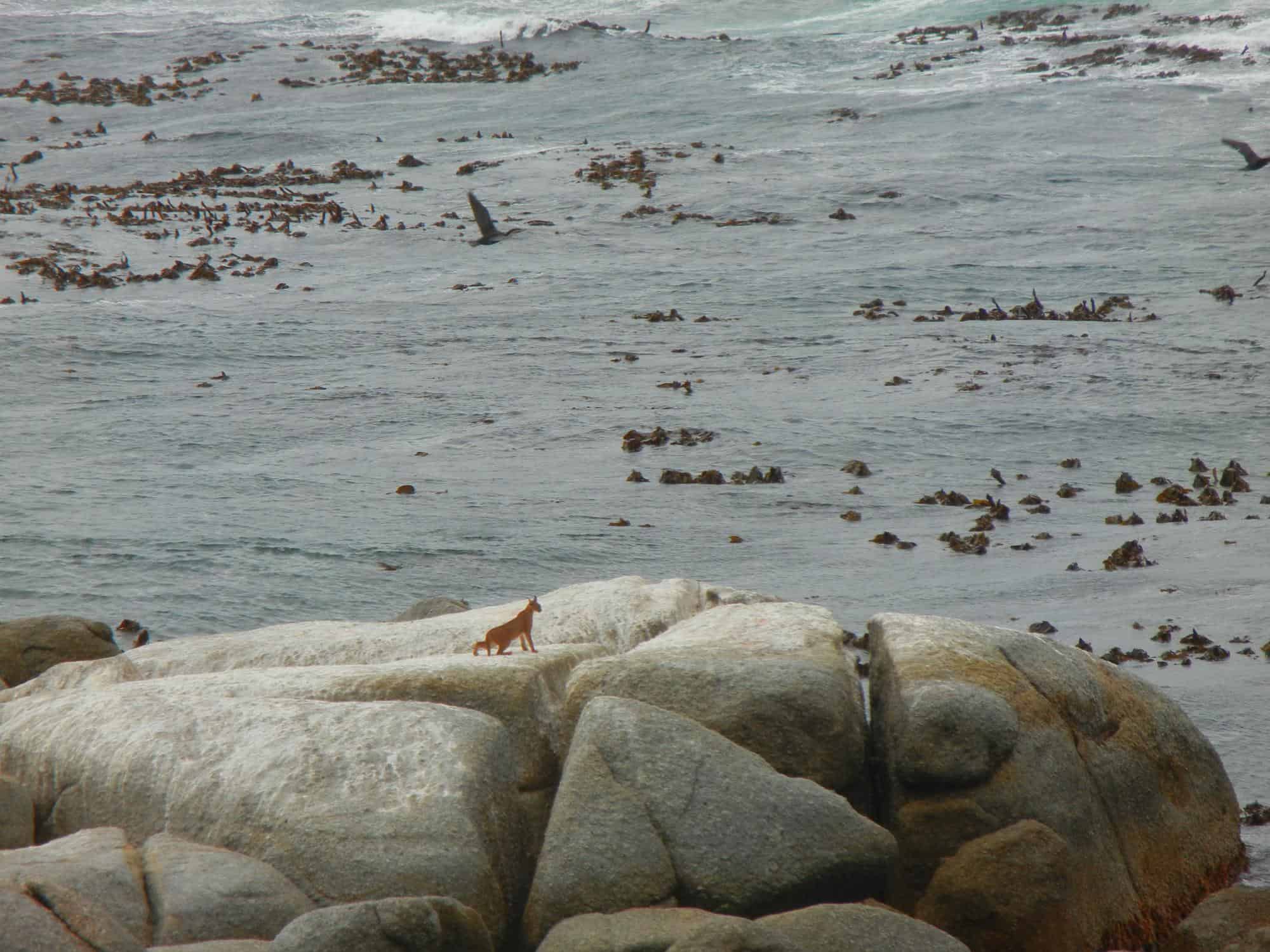
Credit: Anya Adendorff
Starting in late 2014, she and her colleagues captured and collared the cats to learn more about the population in the area, including what they ate and what types of environments they used. In total, they captured 29 cats and collared 26 of them with GPS tracking devices.
In the ongoing research, they are reviewing the GPS data to find clusters in particular areas that might indicate where they are feeding.
“We went on the ground and investigated more than 600 sites where clusters formed to look for prey remains,” Serieys said. They also collected about 700 scat samples to analyze the urban cats’ diets.
Enlarge
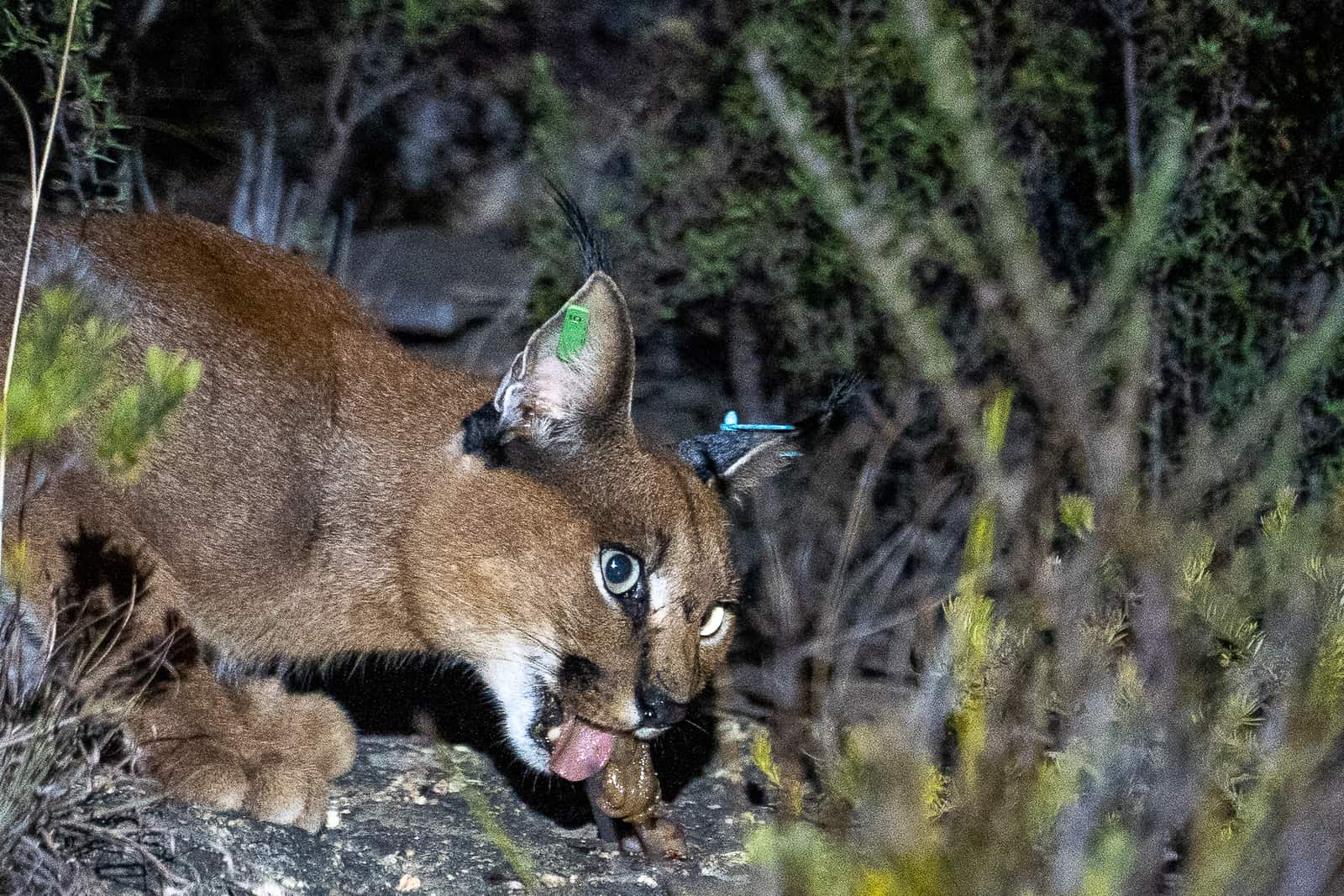
Credit: Jay Caboz
Cape Town caracals had a diverse diet, they found. From dissecting scat and examining suspected kill sites based on GPS clusters, they detected more than 70 prey species, particularly medium-sized birds and native rats. They were also seen eating frogs, as in the photo.
Enlarge

Credit: Steve Leslie
The diet information and the GPS coordinates collected from collars showed they like to spend their time on the coastline, where they hunt seabirds. That sometimes gets caracals into trouble with local wildlife managers, Serieys said, since they’ve been known to occasionally prey on African jackass penguins (Spheniscus demersus), classified as endangered by the International Union for Conservation of Nature.
“The caracals that enter the colony end up being captured and euthanized by the city,” Serieys said.
This isn’t the only trouble they get into in the city — and for that matter, in the rest of the country. They often prey on domestic cats, chickens and ducks. “In South Africa, they’re definitely a conflict species,” she said. “In agricultural areas, they are heavily persecuted by farmers.”
The movement patterns researchers revealed show that the main population of cats are confined to a peninsula isolated by the City of Cape Town. Genetic surveys suggest these cats there have high levels of inbreeding, so it appears to be a closed off population. There are only about 320 square kilometers available to them there, and a typical male territory in other areas is about 75 square kilometers.
Enlarge
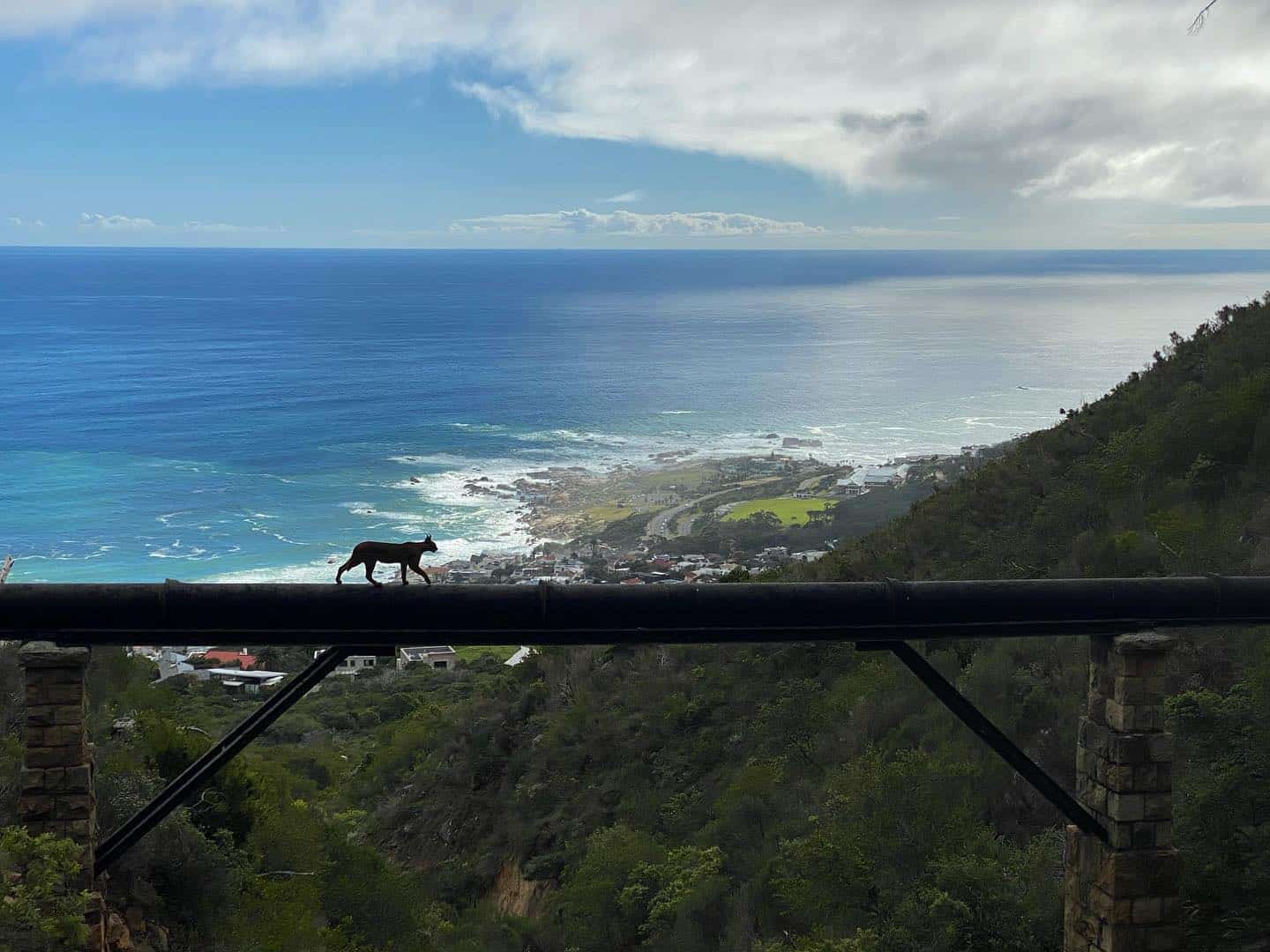
Credit: Krisleigh Marx
A rough estimate would put about 50 cats in the area, which likely means heavy competition in a small territory, Serieys said. Her team has even detected caracals killing and eating other caracals.
Enlarge
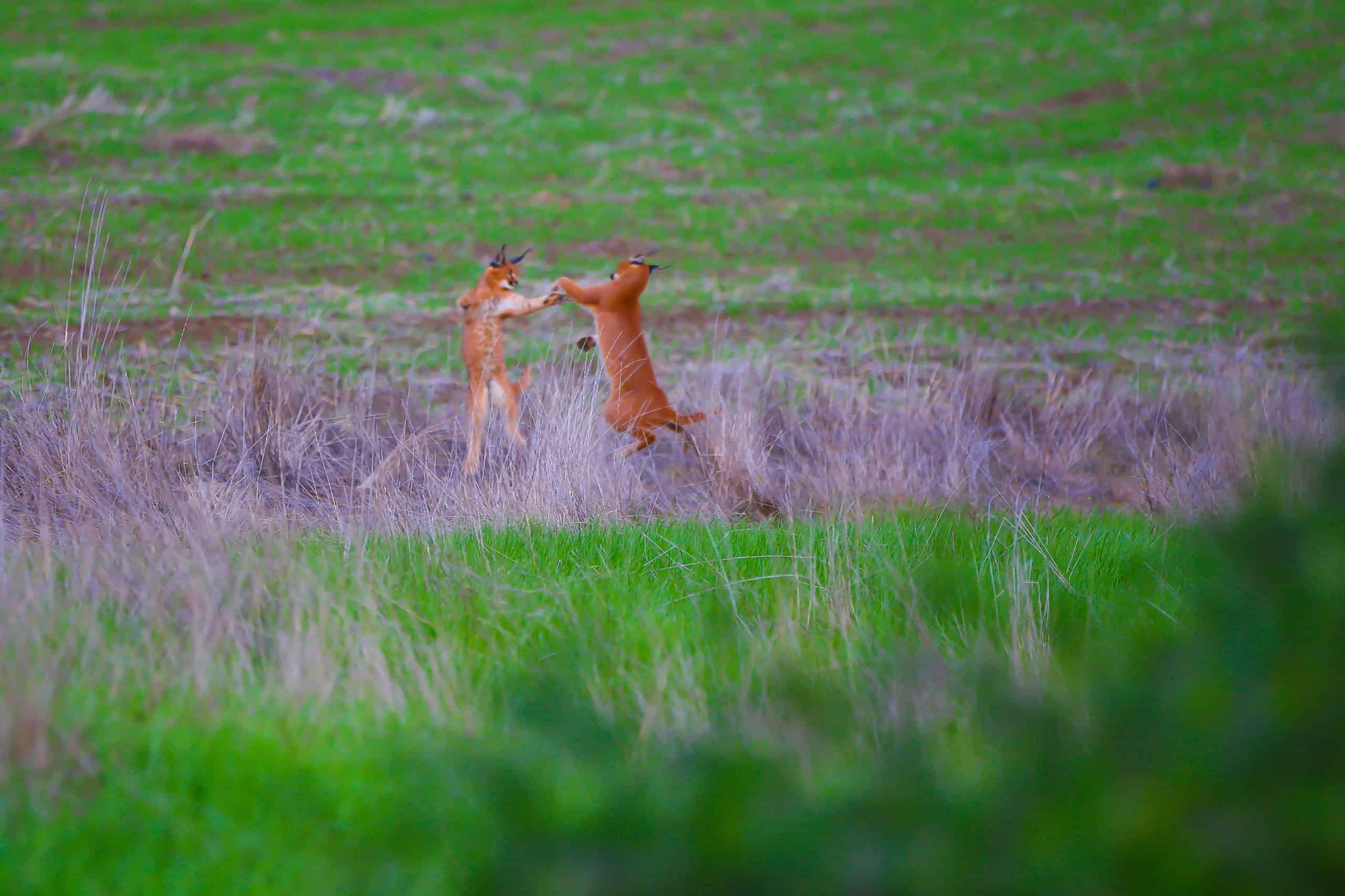
Credit: Theo Bruwer
Their data also showed that the cats prefer to spend time right at the edge of the urban areas, where they might encounter increased foraging opportunities. Samples from two subpopulations show the ones with a more fragmented habitats are more likely to get closer to urban edges than those that have more contiguous landscapes. Serieys said this shows that those urban cats may have become habituated to exploiting food sources near humans.
Enlarge
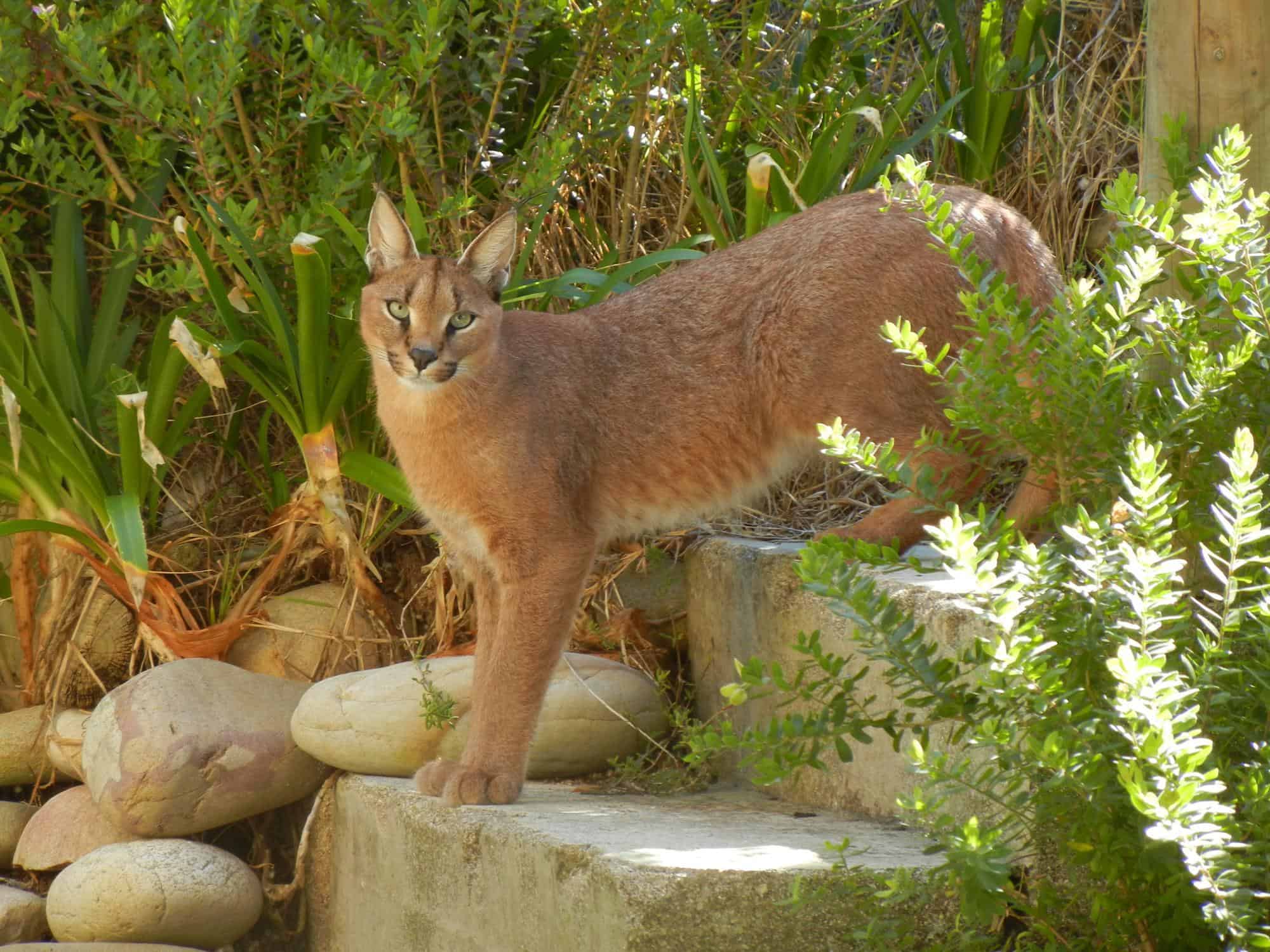
Credit: Anya Adendorff
But they aren’t necessarily changing their behavior to avoid humans, she said. “We’re not detecting altered activity patterns in response to human activity.”
Enlarge
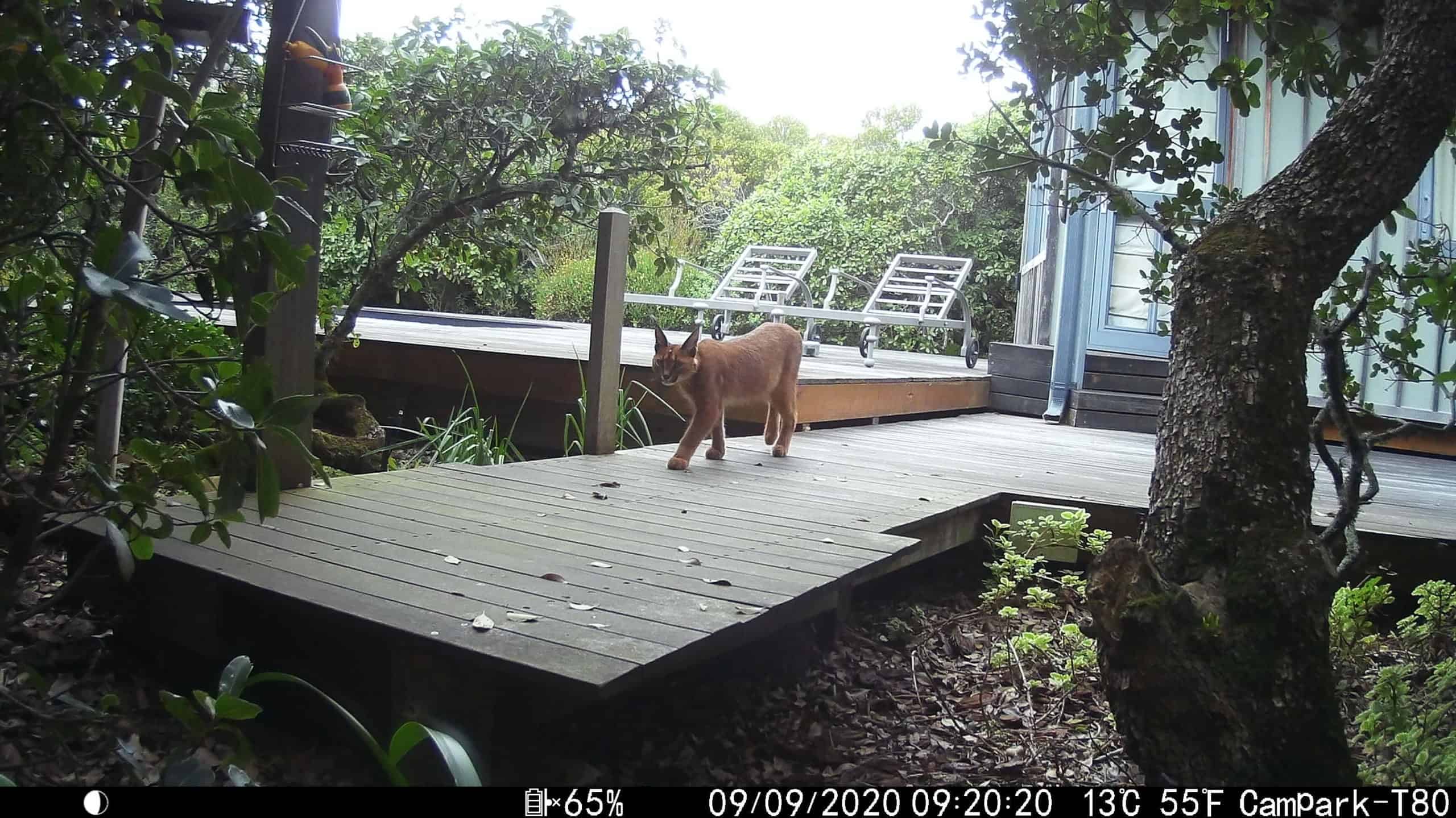
Credit: Victoria Reuvers
But living near urban edges may bring the urban cats problems, she said. Testing blood and liver tissue revealed that these caracals have widespread exposure to anticoagulant rodenticides and even illegal DDT. But like other urban animals, the caracals of Cape Town are most often killed by vehicles.
Enlarge
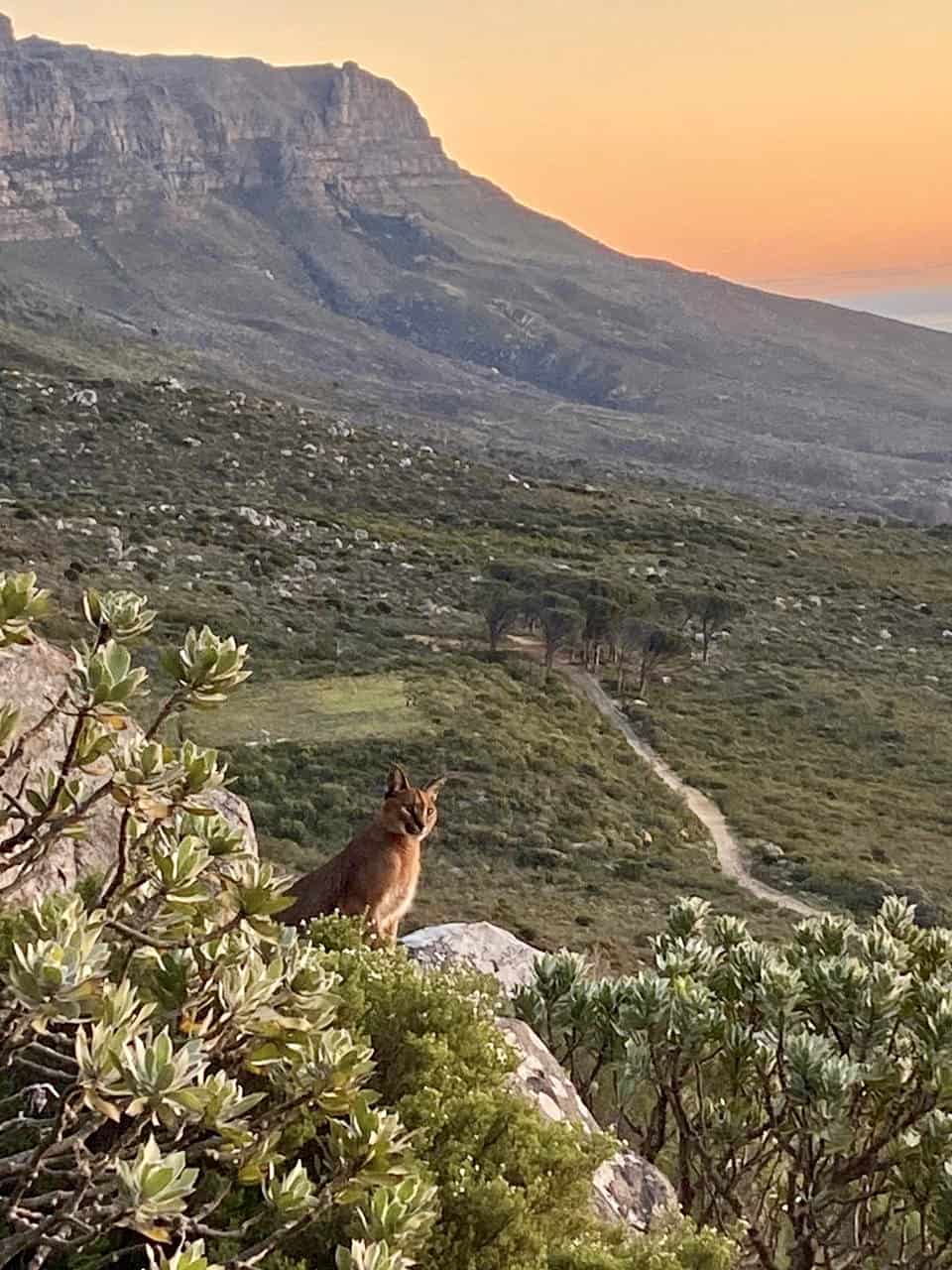
Credit: Hans Peter-Neth
This photo essay is part of an occasional series from The Wildlife Society featuring photos and video images of wildlife taken with camera traps and other equipment. Check out other entries in the series here. If you’re working on an interesting camera trap research project or one that has a series of good photos you’d like to share, email Joshua at jlearn@wildlife.org.
Header Image: A caracal overlooks Cape Town, South Africa. Credit: Hilton Davies



